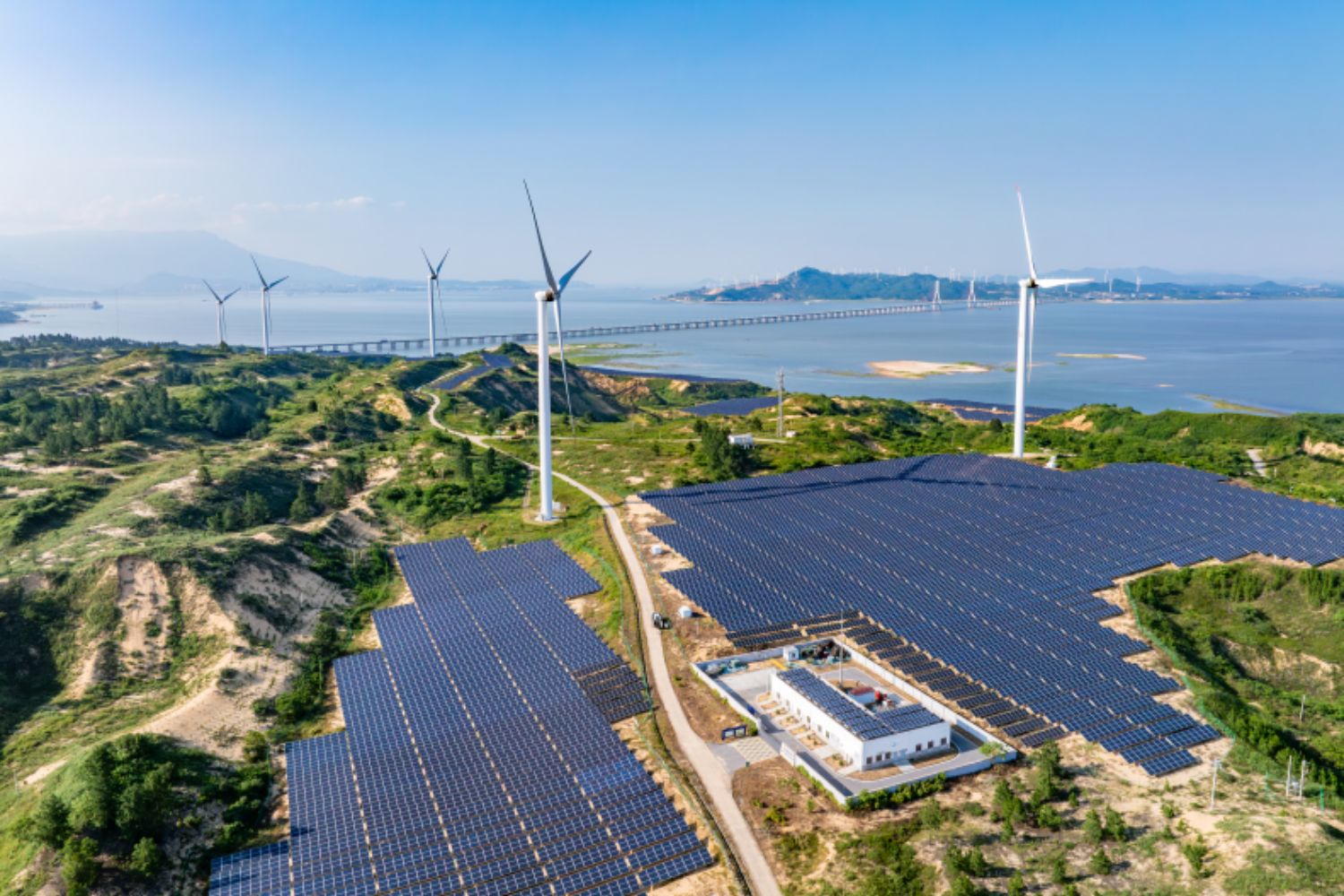In the first half of 2025, solar and wind energy covered and exceeded the entire growth in global electricity demand, leading renewables to surpass coal for the first time. CO₂ emissions from the electricity sector fell by 0.2%, thanks to reduced fossil fuel use. However, regional differences persist: in the EU and USA emissions increased, while in China and India they decreased.

Table of contents
Solar and wind energy have met and exceeded the entire growth in electricity demand, leading renewable sources to surpass coal for the first time.
This is according to the new report from think tank Ember, titled Global Electricity Mid-Year Insights 2025, which — despite many regional challenges and geopolitical uncertainties — signals that global demand for fossil fuels in the electricity sector is approaching its peak.
Solar and wind
In the first half of 2025, solar (in particular) and wind exceeded the increase in global electricity demand, which grew by 2.6%.
Solar alone met 83% of the increase in global demand. In the first half of this year, solar energy recorded the fastest absolute growth ever (+31%). Solar’s share in the global electricity mix rose to 8.8%. China remained the leader in terms of absolute growth, contributing 55% of the global solar increase.
Wind energy grew by 7.7%, at a slower pace. Nevertheless, its share in the global mix rose to 9.2%.
Thanks to this progress, renewable sources (solar, wind, hydroelectric, and bioenergy) reached a share of 34.3% in the global electricity mix, surpassing coal (33.1%).

Hydroelectric, bioenergy and nuclear
Mixed results for other low-carbon sources. Global hydroelectric generation recorded a 2% decline compared to the same period last year, reducing hydroelectric’s share in the global electricity mix to 13.9%.
Declines were observed in several economies, due to drought conditions or dry weather, particularly affecting the European Union (-17%) and Turkey (-25%). However, hydroelectric generation increased in other countries, including India (+17%) and Colombia (+24%).
Regarding bioenergy, forms of energy obtained from biomass of plant or animal origin, production decreased by 1% globally. In particular, in the European Union bioenergy production fell by 3.2%.
Global nuclear generation increased moderately by 33 TWh (+2.5%), maintaining its share at 9.1% of the global electricity mix in the first half of 2025. Most of this growth was driven by Asia: China alone contributed 73% of the global increase in nuclear production. Canada (+13%) and France (+2.5%) also recorded increases. Conversely, declines occurred in the United States (-1.4%) and Belgium (-16%).
CO₂ emissions in the electricity sector slightly down
Globally, CO₂ emissions from the electricity sector decreased marginally by 0.2%, despite the increase in demand. This decline was made possible by the fact that solar and wind exceeded demand growth, resulting in a slight decrease in fossil fuel use. In particular, significant reductions were observed in China (-1.7%) and India (-3.6%), while emissions increased in the European Union (+4.8%) and the United States (+4.3%).
USA: less gas, more coal
In the United States, solar and wind met only 65% of the demand increase. There was also a reversal of trend: gas generation decreased drastically (-3.9%), but was replaced by coal, whose production increased by 17%. This situation, combined with insufficient renewable growth to cover demand, resulted in an increase in U.S. emissions.
European Union: gas on the rise
The European Union recorded modest demand growth. Despite strong solar expansion (rising to 14%), unfavorable weather conditions caused significant declines in wind (-8.5%) and hydroelectric (-17%) generation. These reductions were offset by an increase in gas generation (+14%) and, to a lesser extent, coal (+1.1%), resulting in increased electricity sector emissions.
Toward the transition
Half the world has now surpassed its peak in fossil fuel energy production, and the tools to accelerate the transition are available. The report suggests that governments, also in light of falling solar and wind energy prices, should seize opportunities to establish more ambitious targets and policies to accelerate their implementation.
Source: EMBER
